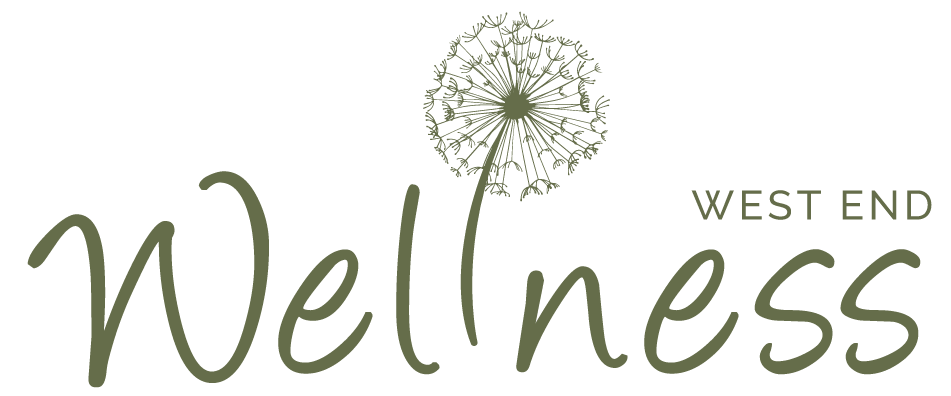What Is A Muscle Knot? Is There A Way To Treat Them?
Small, bump-like areas of muscle, referred to as muscle knots or myofascial trigger points, are commonly referred to as trigger points. Such trigger points commonly yield tenderness.
Treatment generally involves home remedies to promote relaxation, but you may also utilize professional treatments to help myofascial release.
Research has shown that muscular tissue knots may influence as much as 85 percent of the populace. Muscle tissue mass knots harm movement, cause pain, trigger discomfort, and lower a person's lifestyle.
Below we will go over the questions asked with the end goal of helping with everything you need to know about what causes muscle knots, to methods to get rid of muscle knots.
What Are Muscular Tissue Knots?
Trigger points are hyperirritable nodules of muscle tissue that can cause discomfort and can end with chronic pain, a limited range of movement, referred pain, and autonomic dysfunction.
Trigger points as either active or latent. Either touching or not making direct contact with the trigger point will cause pain with active trigger points. On the other hand, symptoms for latent trigger points do not appear until the person is touching the trigger point.
Muscle or fascia tissue can develop almost anywhere on the body, forming muscle knots. Below are the most common places where you may develop knots:
Calf muscles
Lower back
Mid back
Neck
Shins
Shoulders
Muscle fibers of a trigger point up close
What Triggers Muscle Knots?
Muscular tissue knots, referred to as myofascial trigger points, are intricate and have a range of possible causes.
Although not all research has been done on the cause, high-quality research suggests that muscle knots are usually caused by excessive workouts or constant activity. Other reasons might consist of the following:
Mental stress
Poor ergonomics
Poor posture
Fatigue
Dehydration
Harmful consuming habits
Sleep disturbances
Joint problems
Muscular tissue fibres are made to relocate; however, when we sit at the computer all day, with minimal movement, these muscle mass fibres start to stay with each other, developing a knot.
What Are The Symptoms Of Muscle Mass Knots?
Pain is the key symptom of muscular tissue knots. Given that every person experiences pain differently, your signs might differ from those of someone else.
Most individuals concur that muscle mass knots feel puffy, strained, or bumpy and trigger an aching sensation when someone applies pressure.
Depending on where the muscular tissue knot is located in the body, it may create unconnected pain in various other areas. For example, a muscle mass knot in the neck can send discomfort into the base of the skull, triggering stress and frustration.
Who Is Most At Risk For Muscle Knots?
Very few people live their lives without ever experiencing a muscle knot. Ninety-seven percent of people with persistent pain have trigger points, and 100 percent of individuals with neck discomfort have them.
There are, nonetheless, specific risk variables that boost the probability of creating muscle mass knots; these include:
Ageing
Disease
Stress
People with fibromyalgia
coming and seeing a registered massage therapist can help ease those painful knots
Just How Are Muscle Knots Identified?
Diagnosing a muscle mass knot needs a physical examination by a seasoned specialist, like a massage therapist.
Seeking a specialist can help prevent knotted muscles, and taking time to receive care and treat muscle knots will help not only with your range of motion as it loosens stiff muscles, but a massage will help to relax the muscle so you can go on with your daily tasks.
A specialist may refer you to physical therapy in more severe cases where you constantly feel pain. A physical therapist can help to identify the underlying causes of your chronic pain.
They will utilize suitable treatments to administer pain management so that you will not experience pain again. A well-informed therapist will also look to help you by teaching you various exercises to prevent knots from returning.
Exactly How Are Muscle Mass Knots Treated?
As soon as you've been identified, the concern becomes, "How do I deal with the muscle mass knot in my back/neck/shoulders, and so on?" There are several alternatives on how to treat and prevent muscle knots, but the most typical options are as follows:
Physical Therapy
Chiropractic Care
Exercise
Ultrasound Therapy
The goal is to release the tender point to lessen pain and boost mobility by releasing the connective tissue and alleviating pinched nerves.
How Can You Protect Against Muscle Knots To Begin With?
Since muscular tissue knots result from overuse, stress and anxiety, bad posture, exhaustion, etc., your risk of obtaining a muscular tissue knot can be decreased by relaxing and working on the pose and general lifestyle routines.
Right here are some pointers:
Improve your pose by being in a straight upper back, with your shoulders back and down. Try your finest not to slouch.
Take throughout the day time to rest and include workouts into your regimen.
Do not exaggerate when raising hefty items. Request for assistance, take it gradually or relocate points in batches.
If your work requires you to sit for hours and hours every day, always take periodic stretch breaks to prevent your muscle fibres from becoming needlessly tight.
Ensure your diet plan includes a healthy mix of magnesium, potassium, and calcium, and drink lots of water to keep your body hydrated.
using a rounded sphere like a tennis point can help realive muscle tension
Can You Treat Muscle Mass Knots In The House?
Treating muscle mass knots can take time. You'll need to break up the knotted cells and calm swollen nerves to eliminate the knots. Adhering to are some things you can do to assist in separating the knots as well as locate relief.
Rest
If you have muscle mass knots, enable your body to rest. Pause from any tasks that are triggering the knots or that boost your discomfort or pain.
Devote as much time as possible to leisure. This may include sleeping longer than common or, depending on a comfortable position using pillows to sustain your body.
Stretch
Gentle extending that elongates your muscular tissues can help you to launch tension in your body. Be gentle with yourself while extending.
When doing stretches, it is best to locate the body where there are muscle knots or trigger points and once found, methods like a tennis ball or foam roller can relieve muscle tension.
As you work the muscle, you should find it increases blood flow, reducing pain. For best results, hold for a minimum of 30 seconds and gradually release the stretch to lower your threat of injury.
Exercise
Cardiovascular exercise may help to relieve muscular tissue knots. If you do exercises that strengthen the muscles in your shoulders and neck, such as jumping jacks, swimming, or any arm exercise, the knots on your body will loosen.
This extends the muscular tissues and also raises their blood supply. Enhanced blood supply helps repair damaged tissue.
Hot and cold treatment
Using a combination of heat and cold can help relieve pain and swelling caused by muscle knots. Cold helps tighten the capillaries, which lowers swelling.
To use cold, apply a cold compress for 10 minutes and then remove it for at least 15 minutes. You can duplicate this until you begin to locate relief.
Heat loosens up and loosens rigid muscular tissues and alleviates discomfort. Warmth may raise blood circulation, which promotes healing. To use warm, use a hot pad or take a warm bath.
Alternative in-between chilly and warmth therapy, or use the one that functions best for you. Hot and cold therapy ought to be utilized combined with various other treatments.
Make use of a muscle rub
Muscle massages help to unwind and soften muscle knots. You can massage a muscle rub onto the affected location twice a day for cooling relief. You might need to acquire assistance from a person if you wish to learn about rugged areas.
Look for a formula containing menthol, capsaicin, or camphor. Before using a salve for the first time, try a patch test. A patch test entails using a small amount of the salve around the area on the forearm. Wait 24 hours to ensure there's no reaction. If there's no response, you should be great at using it for various other parts of your body.
sometimes doing nothing and taken things slow can help with muscle tension
Conclusion
Hopefully, now you have a better understanding and can say you know about muscle knots and how muscle knots can occur anywhere in the body.
But do not be alarmed if you encounter a sore spot that may be painful and swollen. It is essential to seek help from a trained therapist or a doctor for the possible causes and correct treatment.
In some cases, knots can cause chronic pain, and the scar tissues that can build up can become so serious that they can stop someone from enjoying their everyday life and activities.
Visiting a registered massage therapist can help you with a treatment that will help the muscles relax and provide you with stretches you can do at home or in the office.
Remember, when dealing with myofascial pain syndrome, you need to stay patient as you ease yourself back to health. Drinking plenty of water will also help to treat knots; as you start working on stretches which will slowly release the muscle fibres that have, up until now, been painful to the touch.
When working on home stretches, find that tender spot and massage the sore muscle with your hands and massage tools to help break down the bands of knotted muscles.
You can also use tools like a foam roller or tennis ball.
When using a foam roller or placing a tennis ball in certain areas, you will apply extra pressure to the knot, which will help not only relieve the tight muscle but also restore muscle function that you may have lost from not being able to function correctly.
Muscular tissue knots in any location of the body are uncomfortable and frustrating.
Since you know what they are, what triggers them, and how to treat them, we hope you'll find relief and return to enjoying your everyday activities.
If you have any further doubts or questions regarding this subject or another treatment, contact one of our experienced Acupuncturists or Registered Massage Therapists here at West End Wellness Clinic. You can either give us a call or make an appointment.
Disclaimer: Please remember this article is for informational purposes only and should not replace professional medical advice. Please consult a healthcare provider or someone with the correct qualifications before starting any new exercise or treatment program.





